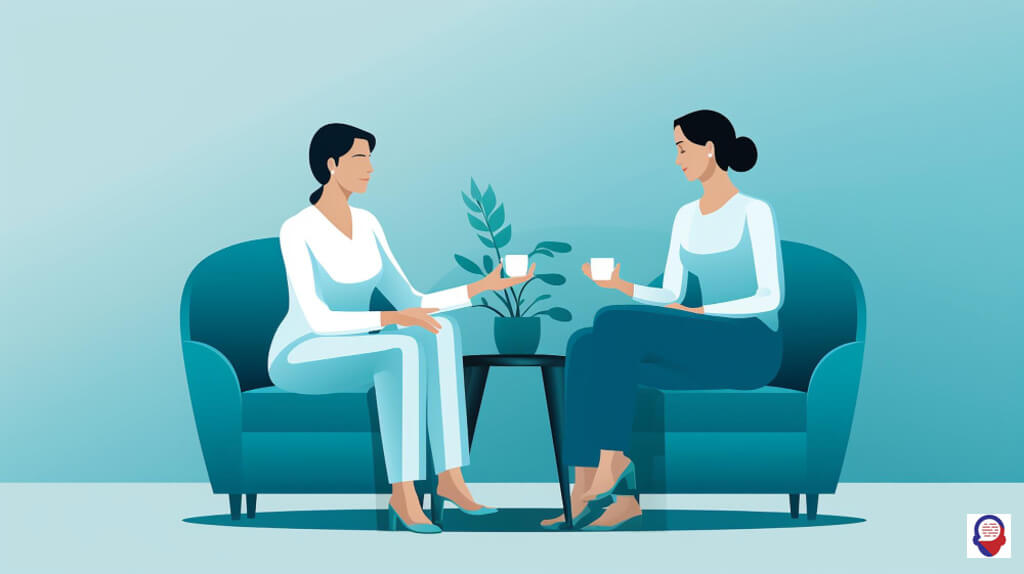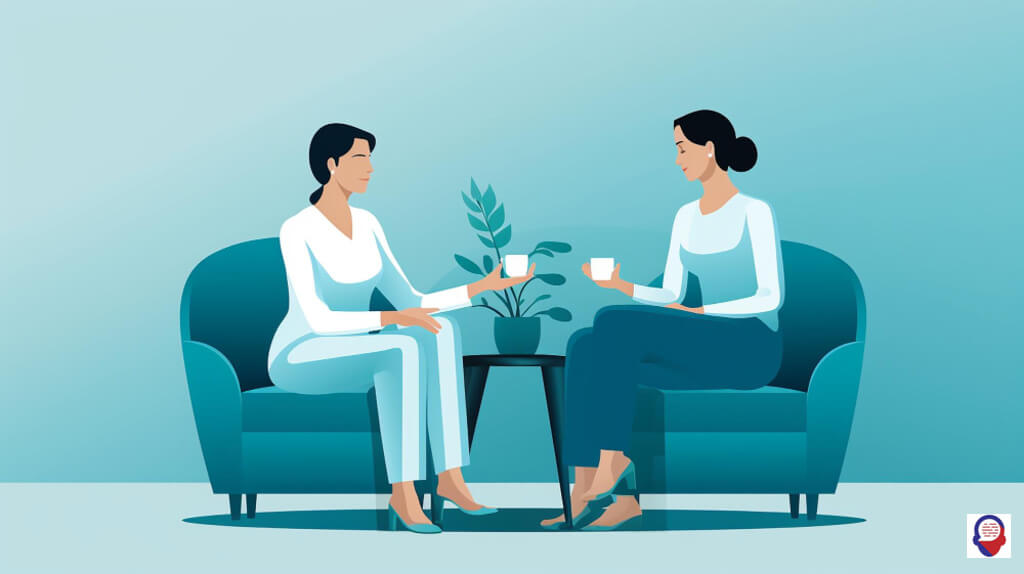Your Ultimate Guide to the DBT Skills Training Manual
Have you ever felt like your emotions were a runaway train, pulling you along tracks you didn’t choose? It’s a feeling many of us know, a sense of being overwhelmed by the sheer intensity of our inner world. This is precisely where a groundbreaking approach called Dialectical Behavior Therapy, or DBT, comes in. At its heart is a powerful tool, a roadmap for navigating life’s most difficult moments: the DBT Skills Training Manual. This isn’t just a book; it’s a comprehensive guide designed to teach practical, life-altering skills for anyone struggling with emotional dysregulation.
Imagine having a toolkit specifically designed to help you understand your emotions, survive painful crises without making things worse, improve your relationships, and live more fully in the present moment. That is the promise of the DBT manual. It demystifies the chaotic experience of intense emotion and offers a structured, compassionate path toward building a life you experience as worth living. This article will be your guide to that guide, unpacking its core principles, exploring its powerful skills, and showing you how it works in practice.

What Is the DBT Skills Training Manual?
The DBT Skills Training Manual is the official, comprehensive textbook that outlines the skills component of Dialectical Behavior Therapy. It was developed by Dr. Marsha Linehan as a structured curriculum for therapists to teach clients a set of four core skill modules designed to manage overwhelming emotions and improve life effectiveness.
Think of it as the foundational text for the "class" part of DBT. While DBT involves individual therapy and other components, the skills group is where clients systematically learn, practice, and master the techniques that lead to lasting change. The manual provides the lesson plans, the handouts, and the detailed explanations for every single skill taught in the therapy.
It is meticulously organised, breaking down complex psychological concepts into understandable, actionable steps. For every skill, the manual provides the rationale, the step-by-step instructions, and often, homework sheets to help clients integrate what they’ve learned into their daily lives. It is the definitive resource for both the clinician teaching DBT and the client learning to build a more stable, fulfilling existence.

Who Created This Transformative Therapy Approach?
Dr. Marsha Linehan, a psychologist and Zen master, is the pioneering developer of Dialectical Behavior Therapy. Her work was born from a deep, personal, and professional commitment to helping individuals who were suffering intensely, particularly those diagnosed with borderline personality disorder (BPD) and struggling with chronic suicidal thoughts.
Dr. Linehan found that traditional cognitive-behavioral approaches, while helpful, sometimes felt invalidating to people in extreme emotional pain. They needed something more. They needed both acceptance and change. This core "dialectic," the synthesis of two opposites, became the foundation of her new therapy. She integrated principles of acceptance and mindfulness from Zen practice with concrete, science-backed strategies for change.
The result was DBT, a therapy that validates a person’s current reality and suffering while simultaneously providing the tools and motivation to build a different future. The manual is the culmination of decades of her research, clinical practice, and profound insight into the nature of human suffering and resilience.

Why Is a Manual Necessary for DBT?
A manual is necessary for DBT to ensure fidelity, consistency, and effectiveness in its delivery. It standardises the treatment, meaning that a client receiving DBT skills training in one city is learning the same core curriculum as a client in another, ensuring a high standard of care.
This structure is vital. When dealing with severe emotional dysregulation, a clear, predictable, and systematic approach is profoundly helpful. It reduces confusion and provides a reliable framework that both therapist and client can depend on. The manual acts as a shared language and a common point of reference, making the therapeutic process more transparent and collaborative.
Furthermore, the manualised nature of the skills training allows for rigorous scientific research. Because the intervention is clearly defined, researchers can study its effectiveness with confidence, leading to the strong evidence base that supports DBT today. It transforms therapy from an abstract art into a teachable, replicable science.

What Are the Core Pillars of the DBT Manual?
The DBT Skills Training Manual is organised around four primary modules, which are the core pillars of the therapy. These modules are Mindfulness, Distress Tolerance, Emotion Regulation, and Interpersonal Effectiveness, each designed to target a specific area of difficulty.
These four pillars work together synergistically. Mindfulness provides the foundation of awareness for all the other skills. Distress Tolerance gives you tools to survive crises. Emotion Regulation helps you manage day-to-day emotional sensitivity. Finally, Interpersonal Effectiveness equips you to build and maintain healthy relationships. Together, they form a complete toolkit for building a life of balance and meaning.

How Does Mindfulness Form the Foundation?
Mindfulness forms the foundation of DBT because it teaches the fundamental skill of paying attention, on purpose, in the present moment, without judgment. This non-judgmental awareness is the first step toward gaining control over your mind and your actions, rather than being controlled by them.
Before you can change your emotions or your reactions, you must first be able to notice them. Mindfulness trains you to observe your thoughts, feelings, and physical sensations as they come and go, without getting swept away. It creates a space between an event and your reaction to it. In that space lies the power to choose a more effective response.
Essentially, mindfulness is the "wise mind" state that DBT aims to cultivate. It’s the balance between the purely emotional mind and the purely logical mind. By practicing mindfulness, you learn to access this inner wisdom, allowing you to see situations more clearly and make choices that align with your long-term goals.

What Are the “What” Skills in Mindfulness?
The "What" skills are the first set of core mindfulness practices in the DBT manual, and they answer the question, "What do I do when I’m being mindful?". These three skills are Observe, Describe, and Participate.
"Observe" means simply noticing your experience without getting caught up in it. This involves paying attention to the sensations in your body, the thoughts passing through your mind, and the emotions you are feeling, just as you would observe clouds passing in the sky. You are the observer, not the storm itself.
"Describe" involves putting words to what you observe. You label your thoughts as "thoughts" and your feelings as "feelings." For example, you might say to yourself, "I am noticing the thought that I will fail" or "I am noticing a feeling of sadness in my chest." This simple act of labelling creates distance and reduces the power of the experience.
"Participate" means throwing yourself completely into the present moment. It’s about becoming one with your experience, whether it’s eating a meal, listening to music, or having a conversation. You let go of self-consciousness and fully engage in the activity at hand, allowing you to experience life directly and richly.

What Are the “How” Skills in Mindfulness?
The "How" skills complement the "What" skills by answering the question, "How should I practice mindfulness?". These three skills are Non-Judgmentally, One-Mindfully, and Effectively.
"Non-Judgmentally" is the practice of seeing and accepting things as they are, without attaching labels of "good" or "bad," "right" or "wrong." You let go of evaluation and simply acknowledge reality. This reduces the secondary suffering that comes from judging yourself for having certain thoughts or feelings.
"One-Mindfully" means doing one thing at a time. In a world full of distractions, this skill trains you to focus your entire attention on the present task or moment. When you are eating, you just eat. When you are walking, you just walk. This practice brings a sense of calm and centeredness to your life.
"Effectively" is the pragmatic skill of focusing on what works. It means letting go of being "right" and instead doing what is necessary to achieve your goals in a given situation. It’s about playing the game skillfully and adapting your approach to meet the demands of reality.

How Can You Learn to Tolerate Distress?
You can learn to tolerate distress by using the skills in the second DBT module, Distress Tolerance. These skills are designed for surviving crisis situations without resorting to impulsive or destructive behaviours that ultimately make things worse.
Distress Tolerance is not about making the pain go away. Instead, it’s about accepting the reality of a painful situation and finding ways to get through it without adding to your suffering. These are short-term, emergency skills for when emotions are at their peak and you feel you can’t bear another second.
The skills are divided into two main categories: crisis survival strategies and reality acceptance skills. Crisis survival gives you concrete things to do to distract and soothe yourself in the heat of the moment, while reality acceptance helps you come to terms with life as it is, reducing the bitterness and anger that can come from fighting reality.

What Are the TIPP Skills for Crisis Survival?
The TIPP skills are a set of powerful techniques designed to rapidly change your body chemistry to reduce extreme emotional arousal. The acronym stands for Temperature, Intense exercise, Paced breathing, and Paired muscle relaxation.
"Temperature" involves using cold water to trigger the mammalian dive reflex, a natural physiological response that quickly slows the heart rate and calms the nervous system. This can be done by splashing your face with cold water or holding a cold pack on your eyes and cheeks.
"Intense exercise" for a short burst can help burn off the powerful energy that comes with anger or anxiety. Even 20-30 seconds of vigorous activity like running in place or doing jumping jacks can provide an outlet for that intense physical arousal.
"Paced breathing" involves slowing down your breathing rate to about five or six breaths per minute. Breathing out for longer than you breathe in signals to your body that the danger has passed, activating the parasympathetic nervous system and bringing on a state of calm.
"Paired muscle relaxation" involves tensing a group of muscles as you inhale and then relaxing them completely as you exhale. This process helps release physical tension held in the body, which is often a major component of emotional distress.

How Do You Use the ACCEPTS Skills?
You use the ACCEPTS skills to distract yourself from overwhelming emotions when you cannot immediately solve the problem causing them. The acronym stands for Activities, Contributing, Comparisons, Emotions, Pushing away, Thoughts, and Sensations.
"Activities" means engaging in a healthy activity that requires focus and gets you out of your head. This could be anything from doing a puzzle to cleaning a room or playing a sport.
"Contributing" involves doing something for someone else. Shifting your focus to helping another person can provide a sense of purpose and perspective, temporarily lifting you out of your own pain.
"Comparisons" means putting your situation in perspective by comparing yourself either to a time when you felt worse or to people who are coping less well than you are. This is not about invalidating your pain, but about finding a sliver of gratitude or perspective.
"Emotions" involves generating a different, competing emotion. You can watch a funny movie to create joy or listen to uplifting music to create a sense of hope, temporarily overriding the painful emotion.
"Pushing away" is the skill of mentally blocking the painful situation. You can imagine putting it in a box on a shelf or building a wall between you and the pain, just for a little while, to get a break.
"Thoughts" means replacing your painful thoughts with other, more neutral ones. You can count to ten, work on a mental puzzle, or recite a poem to occupy your mind and stop the rumination cycle.
"Sensations" involves using your five senses to ground yourself. You can hold an ice cube, listen to loud music, or smell a strong scent like peppermint oil. The intense sensation pulls your attention into the present moment and away from the emotional storm.

What Does Radical Acceptance Really Mean?
Radical Acceptance means completely and totally accepting reality as it is, without judgment, bitterness, or resignation. It is the deep, profound acknowledgment that the present moment is exactly as it should be, a product of a long chain of past events.
This does not mean you approve of the reality. You can radically accept that you have a painful illness without liking that you have it. It’s about letting go of the futile fight with what is. The energy you spend raging against reality, wishing things were different, is what creates so much additional suffering.
Radical Acceptance is the turning point from suffering to ordinary pain. It frees you from the trap of "why me?" and allows you to put your energy into what you can control, which is how you will respond to the reality you are facing. It is a skill of profound peace and freedom.

How Can You Regulate Your Emotions?
You can regulate your emotions by using the third set of skills in the DBT manual, which are designed to help you understand, manage, and change your day-to-day emotional responses. This module is about long-term emotional health, not just crisis survival.
These skills help you identify what you’re feeling, understand the function of your emotions, reduce your vulnerability to negative emotions, and change unwanted emotions once they start. It’s a proactive approach to building a more stable and less reactive emotional life.
By learning these skills, you move from being a passenger on your emotional roller coaster to being the one operating the controls. You learn that emotions are not mysterious forces but are understandable, predictable responses that you can influence.

What Is the Model for Describing Emotions?
The model for describing emotions is a systematic way to understand any emotional experience by breaking it down into its core components. This helps you see the whole picture of what is happening when you feel an emotion.
First, you identify the prompting event that triggered the emotion. Then, you explore your interpretations and thoughts about that event. Next, you notice the biological changes and physical sensations in your body, like a racing heart or a knot in your stomach.
You then observe your action urge, the thing your emotion makes you want to do, like hiding when you feel fear or yelling when you feel anger. You also note your actual body language and facial expressions. Finally, you name the emotion itself and consider its aftereffects. By deconstructing the experience, you can find places to intervene and change it.

How Do You Check the Facts?
You check the facts by questioning whether your emotional response is actually justified by the situation. Many of our intense emotions are based on interpretations and assumptions, not objective reality. This skill involves playing detective with your own thoughts.
You start by asking what event triggered your emotion. Then you list your interpretations and beliefs about that event. You then actively look for evidence that supports and, just as importantly, evidence that contradicts your interpretation.
The goal is to see if your emotion and its intensity actually fit the reality of the situation. If you discover your emotion is based on a misinterpretation, it will often decrease in intensity on its own. If the emotion does fit the facts, you can then move on to problem-solving.

What Is Opposite Action?
Opposite Action is a powerful skill for changing an unjustified or unhelpful emotion by acting opposite to its action urge. Every emotion has a natural, built-in urge to act, and by deliberately doing the opposite, you can send a new signal to your brain that changes the emotion itself.
For example, when you feel fear, the urge is to avoid. Opposite Action would be to approach the thing you fear, in a safe and measured way. When you feel sadness, the urge is to withdraw and isolate. Opposite Action would be to get active and connect with someone.
This skill is used when your emotion does not fit the facts or when acting on the emotion will be ineffective in the long run. It is a behavioral strategy that directly rewires your emotional response patterns over time, helping you break free from cycles of anxiety, depression, or anger.

How Can You Improve Your Relationships?
You can improve your relationships by learning and practicing the skills from the Interpersonal Effectiveness module. This final pillar of DBT teaches you how to navigate social interactions skillfully, get your needs met, maintain your self-respect, and build healthier connections with others.
Many emotional problems are either caused or made worse by interpersonal conflict. These skills provide a clear, structured way to communicate more effectively, reducing misunderstandings and building trust. They are like a user’s manual for human interaction.
The module is broken down into three main skill sets: one for achieving your objectives (getting what you want), one for maintaining the relationship, and one for keeping your self-respect. Learning to balance all three is the key to mastering the art of interpersonal effectiveness.

What Is the DEAR MAN Skill?
The DEAR MAN skill is a structured communication strategy for asking for something you want or saying no to a request. The acronym outlines the steps for making a clear and effective request.
"Describe" the situation factually. "Express" your feelings and opinions about it. "Assert" your request clearly and simply. "Reinforce" the person by explaining the positive outcomes of getting what you want.
Then, you stay on track by being "Mindful" of your goal, "Appearing" confident in your posture and tone, and being willing to "Negotiate" to find a workable compromise. It is a powerful script for effective assertion.

How Do You Use the GIVE Skill?
You use the GIVE skill when your primary goal in an interaction is to maintain a positive relationship with the other person. This is for situations where the connection is more important than winning the argument or getting your way. The acronym stands for Gentle, Interested, Validate, and Easy manner.
"Gentle" means using a soft, respectful tone and avoiding attacks, threats, or judgment. "Interested" means actively listening to the other person’s point of view, without interrupting, to show you care about what they are saying.
"Validate" means showing you understand the other person’s feelings and perspective, even if you don’t agree with them. You can say things like, "I can see why you would feel that way." Finally, an "Easy manner" means using a bit of humor, a smile, or a calm presence to keep the interaction light and positive.

What Is the FAST Skill for Self-Respect?
You use the FAST skill to maintain your self-respect during a difficult interaction, regardless of the outcome. The acronym stands for be Fair, no Apologies, Stick to your values, and be Truthful.
"Be Fair" means being fair to both yourself and the other person. Don’t be overly demanding, but also don’t let yourself be taken advantage of. "No Apologies" means not apologising for making a request, having an opinion, or disagreeing. You can be sorry for a mistake, but not for your existence or your needs.
"Stick to your values" means not compromising your core beliefs or integrity just to get what you want or to be liked. "Be Truthful" means being honest and avoiding lies or exaggeration, which ultimately erodes self-respect. This skill ensures that you can walk away from any interaction with your head held high.

How Is the Manual Used in Actual Therapy?
The manual is used as the core curriculum for the skills training component of a comprehensive DBT program. It provides the structure for weekly group sessions where clients learn the skills in a classroom-like setting.
A standard DBT program integrates this skills training with individual therapy, phone coaching, and a therapist consultation team. The manual is the textbook that guides one of the most essential parts of this multi-faceted treatment, ensuring every client learns the same evidence-based strategies for building a better life.

What Happens in a DBT Skills Group?
In a typical DBT skills group, which usually lasts about two hours, the session begins with a mindfulness practice. This helps everyone become present and centered before diving into the material.
After mindfulness, the group reviews the homework from the previous week. Clients share their experiences trying to apply the skills in their daily lives, discussing what worked and what didn’t. This is a crucial part of the learning process, allowing for real-world problem-solving and peer support.
Finally, the therapist teaches the new skill for the week, using the handouts and explanations directly from the DBT manual. The session ends with assigning new homework practice, which involves trying out the newly learned skill before the next meeting.

What Is the Role of Individual Therapy?
The role of individual therapy in DBT is to help the client apply the skills learned in the group to their specific life challenges. It is where the general knowledge from the manual becomes personalised and targeted.
The individual therapist helps the client stay motivated, troubleshoot obstacles to using the skills, and address any issues that are too sensitive or complex for a group setting. It is the space where the client’s deepest personal goals are explored and where the therapist helps them build a life they truly experience as worth living.

Why Is Phone Coaching Included?
Phone coaching is included to help clients generalise the skills from the therapy room into their real lives. It provides in-the-moment support when a client is facing a crisis or struggling to use a skill effectively.
A client can call their individual therapist between sessions for a brief, focused coaching call. The goal is not to have a full therapy session, but for the therapist to help the client identify which DBT skill to use in that exact moment. This real-time guidance is invaluable for cementing the skills and preventing impulsive or destructive behaviours.
Frequently Asked Questions

Can I use the DBT manual on my own? Yes, you can use the DBT manual and its companion workbook for self-help, and many people find it incredibly beneficial. The manual is written clearly and provides all the necessary information and worksheets. However, DBT is most effective when delivered as intended, within a comprehensive program that includes a skilled therapist and a skills group. A therapist can provide guidance, accountability, and personalised support that is difficult to replicate on your own.

Is DBT only for borderline personality disorder? No, DBT is not only for borderline personality disorder. While it was originally developed for this population, extensive research has shown that DBT is a highly effective treatment for a wide range of issues. These include depression, anxiety disorders, substance use disorders, eating disorders, and general problems with emotion regulation that don’t meet the criteria for a specific diagnosis.

How long does it take to learn the skills? A comprehensive DBT skills training cycle typically takes about six months to a year to complete. Most standard programs run for 24 weeks to cover all four modules, and many clients repeat the cycle to deepen their understanding and mastery of the skills. Learning these skills is like learning a new language; it requires consistent practice and time to become fluent.

What’s the difference between the manual and the workbook? The DBT Skills Training Manual is the comprehensive textbook primarily designed for therapists. It contains detailed theoretical background, teaching notes, and the full curriculum. The DBT Skills Training Handouts and Worksheets is the companion book designed for clients. It contains all the handouts and homework sheets from the manual in a user-friendly format, making it the practical tool for clients to use in their daily practice.
Navigating the DBT manual can be a powerful first step, but true transformation often happens with a guide. At Counselling-uk, we provide a safe, confidential, and professional place to explore these skills with an accredited therapist. If you’re ready to find support for all of life’s challenges, reach out. We’re here to help.





